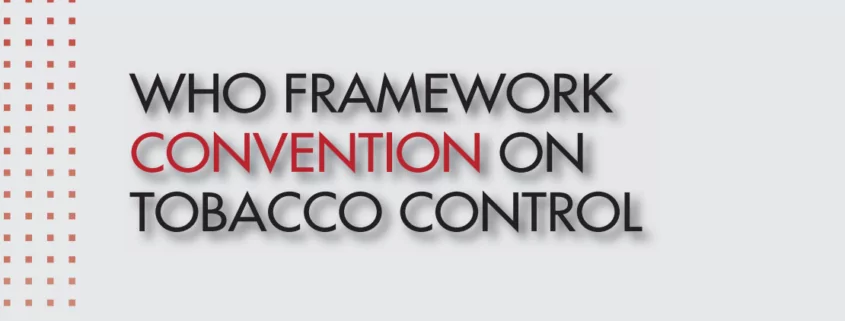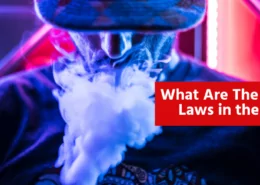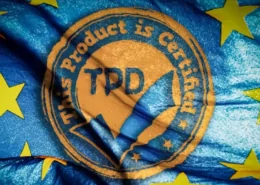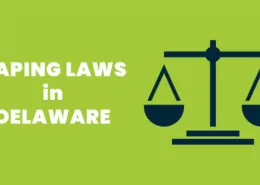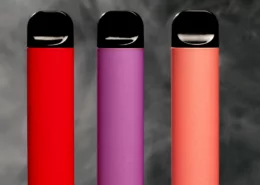World Tobacco Control Convention Progress Report 2022
In 2022, in accordance with the requirements of the Framework Convention on Tobacco Control (hereinafter referred to as the “FCTC”), the contracting parties took various measures to reduce tobacco demand, supply, and harm. These measures included the development of comprehensive tobacco control strategies, adjustments to tobacco product taxes and prices, prevention of exposure to tobacco smoke, strengthening of tobacco product flavors and nicotine control, adjustments to tobacco product packaging and labeling, enhanced regulation of novel tobacco products, and initiation of tobacco control-related legal proceedings. Stakeholders such as the World Health Organization, tobacco control non-governmental organizations, and multinational tobacco companies also took new initiatives. The global tobacco control efforts have shown continuous deepening of regulation for a wide range of tobacco products, frequent extreme tobacco control measures that go beyond the framework of the FCTC, and a shift in focus from formulation to implementation of tobacco control measures.
I. Progress in the Ratification and Negotiation of the FCTC
2022 marked the 17th year of the FCTC’s entry into force. There were no new countries joining the FCTC in 2022, and the number of contracting parties remained at 182, covering over 90% of the global population.
As planned, the Tenth Conference of the Parties to the FCTC is scheduled to be held in Panama in November 2023. The conference will discuss key topics such as the regulation and disclosure of tobacco product ingredients, regulation of novel tobacco products, and the review mechanism for the implementation of the FCTC.
II. Progress in Key Provisions of the FCTC
According to the FCTC’s definition of “tobacco control,” it mainly includes reducing tobacco demand, reducing tobacco supply, and reducing tobacco harm. The regulation of novel tobacco products and legal responsibilities are also key areas of concern under the FCTC.
(1) Tobacco Control Strategies, Plans, and Programs
Article 5 of the FCTC, “General obligations,” requires contracting parties to develop, implement, regularly update, and review comprehensive multi-sectoral tobacco control strategies, plans, and programs.
According to the latest available data, 71% of contracting parties have enacted nationwide comprehensive tobacco control plans through legislation, executive orders, and other means. In 2022, some countries adjusted their tobacco control legislation to expand the scope and strengthen the intensity of tobacco control measures. Ukraine’s tobacco control law amendment came into effect in July. Cape Verde enacted a tobacco control law that includes electronic cigarettes (including nicotine-free e-cigarettes) in its regulatory scope. New Zealand enacted the Smoke-free Environments Act, implementing three major measures to achieve the goal of reducing smoking rates to 5% by 2025.
(2) Reducing Tobacco Demand
Measures related to taxation and pricing.
Article 6 of the FCTC requires contracting parties to implement price and tax measures to reduce tobacco consumption.
According to the latest available data, the average comprehensive tax rate on tobacco products worldwide in 2020 was 55%, a decrease of 2 percentage points from 2018, with an average tax rate of 61.5% for cigarettes. In 2022, countries such as Turkey increased tobacco taxes. Morocco adjusted the prices of local cigarette brands. Ireland increased cigarette prices due to tax rate hikes. The Canadian province of British Columbia implemented new consumption taxes on cigarettes and cigars. Singapore, Belgium, Sri Lanka, Romania, Kenya, Nigeria, and other countries also increased tobacco taxes or prices to varying degrees.
Preventing exposure to tobacco smoke.
Article 8 of the FCTC requires contracting parties to take measures to protect people from exposure to tobacco smoke in public places, primarily through legislation controlling smoking in public places. Countries vary in the scope and intensity of smoking control in public places based on their domestic tobacco production and consumption, social customs, and law enforcement capabilities. The majority of countries have not implemented a blanket ban on smoking.
According to the latest available data, 29.5% of high-income countries, 23.8% of middle-income countries, and 44.5% of low-income countries have not implemented or have only implemented smoking bans in a few public places. This includes countries like the United States, Germany, Italy, Denmark, Finland, and South Korea. In 2022, many countries strengthened smoking control in public places by expanding the range of smoke-free areas and regulating a wider range of products. Qatar strengthened smoking control in public places during the World Cup, including a ban on the use of tobacco products in sports stadiums and increased enforcement of the ban on e-cigarettes. Nepal banned smoking in government offices, educational institutions, libraries, health clinics, airports, nursing homes, orphanages, public toilets, cinemas, theaters, and restaurants. Belgium banned smoking in all train stations and their surroundings, and posted no-smoking signs prominently. Spain banned smoking in outdoor public entertainment venues, including terraces and sports stadiums. Italy, the United Arab Emirates, Finland, the Netherlands, Mexico, Australia, and others also expanded smoke-free areas to varying degrees.
In 2022, several countries strengthened smoking control enforcement due to difficulties in implementing smoking bans in public places. India launched a comprehensive application for public complaints and penalties related to smoking in public places. Malaysia piloted the use of cameras on smoking control enforcement officers, and the recorded videos serve as evidence for smoking-related law enforcement.
In 2022, some countries explicitly defined smoking areas in public places and established standards to better balance the rights of smokers and non-smokers. For example, Portugal amended its law on smoking control in public places to allow smoking areas in restaurants, bars, and other indoor public places. Japan introduced demonstration test sites for “next-generation smoking areas” to better separate smokers and non-smokers in public places effectively.
Ingredient Regulation and Disclosure
Articles 9 and 10 of the FCTC require contracting parties to take effective measures for the regulation and disclosure of tobacco product ingredients, including testing, control, reporting to the government, and disclosure to the public. Due to the specialized nature and legal barriers involved, the implementation progress of Articles 9 and 10 has been relatively slow. In recent years, flavor regulation has become a focus of tobacco control measures worldwide to reduce the attractiveness of tobacco and prevent underage smoking.
In 2022, many countries focused on strengthening flavor regulation, particularly regarding menthol. The European Union (EU) issued a ban on menthol-flavored heated cigarettes. The U.S. Food and Drug Administration (FDA) announced plans to ban the sale of menthol cigarettes and flavored cigars in the United States, with specific regulations still being formulated. The United States also strengthened ingredient regulation for nicotine, including reducing nicotine content and implementing comprehensive regulation of nicotine across the supply chain.
Packaging and Labeling
Article 11 of the FCTC requires contracting parties to adopt and implement effective measures for packaging and labeling of tobacco products in accordance with their national laws. Some contracting parties have implemented stricter packaging measures, including graphic warnings and plain packaging. According to the latest available data, a total of 120 countries or regions have graphic warnings on cigarette packaging, with 22 countries implementing plain packaging legislation. In 2022, a few countries continued to promote graphic warnings, and some even extended health warnings from cigarette packs to individual cigarettes. At the same time, the implementation of graphic warnings and plain packaging faced challenges in multiple countries.
Advertising and Promotion, Public Awareness, and Smoking Cessation
Article 12 of the FCTC requires contracting parties to strengthen public awareness of tobacco control through various media tools, education, and training programs. Article 13 requires contracting parties to broadly prohibit tobacco advertising, promotion, and sponsorship in accordance with their constitutional or constitutional principles. Article 14 requires contracting parties to take effective measures to promote smoking cessation. In 2022, some countries organized training and awareness campaigns targeting youth and other key populations to raise awareness of tobacco hazards and promote smoking cessation. The Egyptian Ministry of Health and Population launched activities to raise awareness among the Egyptian population, especially young people, about the dangers of smoking and encourage smoking cessation. The New Zealand government increased investment in smoking cessation services, focusing on Maori and Pacific Islander populations.
(3) Reducing Tobacco Supply
Combating illicit trade.
Article 15 of the FCTC requires contracting parties to take effective measures to eliminate illicit tobacco trade. Illicit tobacco trade has been a global challenge due to issues such as inadequate funding, technical barriers, and difficulties in control. Measures widely recognized as effective include licensing systems, printing origin labels, establishing tracking and tracing systems, and the destruction of illicit products. In 2022, due to factors such as increased cigarette consumption taxes and economic downturn, illicit tobacco trade increased significantly in many countries. Governments took cross-border joint actions and adopted technological means to combat illicit tobacco trade. The Pakistani government established a tobacco tracking and tracing system, requiring tobacco products sold within the country to have designated identification codes and use a unified traceability system to combat illicit trade and ensure tax collection. Belgian law enforcement officers collaborated with Poland and Lithuania, successfully uncovering a transnational counterfeiting and smuggling case worth 73 million euros (approximately 1 euro = 7.7 RMB).
Protecting minors.
Article 16 of the FCTC requires contracting parties to take effective measures to prohibit the sale of tobacco products to minors. Minors are a key focus of tobacco control policies. In recent years, various measures aimed at protecting minors, such as strengthening regulation of novel tobacco products, comprehensive bans on tobacco advertising, and raising the minimum age for purchasing tobacco products, have been implemented.
In 2022, several countries or regions raised the legal age for purchasing tobacco products. Turkmenistan banned the sale of tobacco products to individuals under 21 years old. Saudi Arabia and the United Arab Emirates banned the sale of tobacco products to individuals under 18 years old. In 2022, many countries strengthened age verification for purchasing and using tobacco products by banning cigarette vending machines, prohibiting the sale of single cigarettes, and adopting new technologies. Indonesia banned the sale of single cigarettes. Belgium banned tobacco vending machines in bars and restaurants. South Africa and the United Arab Emirates banned the use of vending machines to sell cigarettes.
(4) Other Key Topics
Regulation of novel tobacco products.
With the rapid development of novel tobacco products, it has become a consensus among countries to strengthen their comprehensive regulation. Since 2022, except for a few countries or regions such as Mexico, Brazil, and Panama that have issued bans on e-cigarettes, more countries have included novel tobacco products within the scope of tobacco products and regulated their production, distribution, and consumption.
Regarding production regulation, according to the latest available data, 39 countries, including Canada, Denmark, and Romania, restrict nicotine content in e-cigarette liquids. Thirty-nine countries, including the UK, the Netherlands, and Portugal, restrict additives in e-cigarette liquids. The US and the EU have strengthened flavor and nicotine regulation. The EU has banned menthol-flavored heated cigarettes, and the US has included synthetic nicotine in its regulatory scope.
Regarding distribution regulation, for heated cigarettes, countries like South Korea and Japan regulate them as cigarettes in the distribution process. For e-cigarettes, market access remains the most critical means of distribution control. According to the latest available data, 43 countries, including the US, the Philippines, and France, regulate the supply of e-cigarettes through pre-market authorization and regular reporting measures.
Regarding consumption regulation, in 2022, more countries such as the Philippines, Spain, and Ukraine included novel tobacco products in tobacco product regulation based on the protection of minors and smoking control in public places, with increased taxation and pricing becoming a focal point of regulating the consumption of novel tobacco products. In 2022, Japan continued to increase the tax rate on heated cigarettes. Canada implemented a national unified e-cigarette tax. Kenya imposed a tax rate of about 40% on e-cigarettes. The Philippines established minimum retail prices for heated cigarettes and e-cigarettes. The UK regulatory agency, which has consistently had a positive stance on e-cigarettes, issued pricing guidelines, stating that discounted e-cigarettes sold below the guidelines would be considered promotional and prohibited. Switzerland, Kazakhstan, South Africa, Spain, Morocco, Singapore, and other countries also strengthened tax and price regulations for novel tobacco products.
Legal responsibilities.
Article 19 of the FCTC requires contracting parties to take legislative action or promote the enforcement of existing laws to address criminal and civil offenses related to tobacco control. In 2022, several tobacco control-related lawsuits occurred in the United States, including court rulings against graphic warnings on cigarette packaging and settlement agreements between the US Department of Justice and tobacco companies regarding corrective statements on the health risks of tobacco.
III. Key Trends in Tobacco Control by Major Actors
In 2022, the World Health Organization (WHO) and the Secretariat of the FCTC continued to play important roles in global tobacco control efforts. Non-governmental organizations (NGOs) continued to initiate tobacco control actions through funding support, technical assistance, advocacy, and other means. Multinational tobacco companies actively responded to changes in tobacco control laws, policies, and public opinion, making timely strategic adjustments.
WHO
Providing academic research and technical support to guide countries in strengthening tobacco control.
In 2022, the WHO published a total of 11 publications under tobacco control, including the “2021 Overview of Progress in Implementing the FCTC” and the “2021 Overview of Progress in Implementing the Protocol,” providing scientific evidence and specific implementation recommendations for strengthening tobacco control.
Conducting awareness and educational activities, including World No Tobacco Day.
The WHO designated the theme of the 35th World No Tobacco Day as “Tobacco Threatens the Environment,” emphasizing the added pressure on ecosystems caused by tobacco consumption, and conducted tobacco control awareness activities based on this theme.
Initiating relevant actions with funding support from contracting parties.
In 2022, the Secretariat of the FCTC announced the official operation of the “Investment Fund” established by the 9th Conference of the Parties to the FCTC and the 2nd Conference of the Parties to the Protocol. The “Investment Fund” is managed by the World Bank as the fund trustee, and the interest earned will be used to support contracting parties in implementing tobacco control activities. In addition, the WHO established the “Quit Tobacco Partnership” to support tobacco control efforts in low- and middle-income countries. The WHO also launched an AI health worker named “Florence 2.0” in the Southeast Asian region, providing smoking cessation guidance and other services.
Tobacco Control NGOs
Tobacco control NGOs gradually shifted their focus to low- and middle-income countries such as India, Indonesia, Bangladesh, Pakistan, Vietnam, the Philippines, and Mexico. Their actions focused on promoting smoke-free public places, comprehensive bans on tobacco advertising, increasing tobacco taxes, cigarette packaging warnings, and strengthening collaboration with health departments. They also closely monitored the issue of e-cigarette use among youth.
Multinational Tobacco Companies
Philip Morris International (PMI) continued to promote its “smoke-free” strategy as a replacement for the “tobacco-free” strategy. In 2022, PMI acquired the leading heated tobacco product company Swedish Match, further promoting the “reduced-risk” certification of IQOS. Japan Tobacco International (JTI) gave up on JUUL and acquired the third-largest US e-cigarette brand NJOY, which had already submitted a pre-market application. Derek Yach, former Deputy Director-General of the WHO and former head of the Foundation for a Smoke-Free World established by PMI, recently publicly emphasized the importance of reducing the harm of tobacco products and called for amendments to the FCTC based on principles such as “science,” “harm reduction,” and “health.” PMI hired Matthew Holman, former Director of the Office of Science at the FDA Center for Tobacco Products, to oversee market regulation in the United States.
Exploring multiple uses of tobacco and entering new tobacco-related industries. In 2022, British American Tobacco established KBio Holdings Limited, dedicated to exploring the potential of plant-based biotechnology and conducting clinical research on rare diseases and infectious disease treatments. Israeli biotech company BioBetter started using tobacco plants to produce growth factors needed for cell-cultured meat, promoting the large-scale production of cell-cultured meat. In the United States, several tobacco companies sued the FDA and won, resulting in no graphic warnings on cigarette packaging. Some countries and regions that already have laws requiring graphic warnings used various means to obscure or dilute the graphics.
Conclusion
The concept of tobacco control has become a universal consensus in the international community. In 2022, tobacco control measures continued to deepen, and global tobacco control efforts showed some new characteristics.
Comprehensive tobacco product development and regulation continued to advance and deepen. In recent years, multinational tobacco companies have expanded their business scope and redefined tobacco products. The expansion of the tobacco product category has prompted the implementation of new regulatory measures. More regulatory authorities have included non-leaf nicotine products, nicotine-free tobacco imitations, derivatives, and associated products of tobacco companies within the scope of tobacco control. The regulatory landscape of comprehensive tobacco control continues to explore a more comprehensive, extensive, and deepening approach.
Extreme and radical tobacco control measures emerged that went beyond the requirements of the FCTC. In 2022, a small number of countries with radical tobacco control positions implemented measures that exceeded the requirements of the FCTC. For example, in terms of protecting minors, some countries or regions raised the legal age for purchasing tobacco from 18 to 21, and individual countries even enacted “next-generation tobacco-free” ordinances. These measures have become hot topics and subjects of controversy due to their excessive strictness.
The focus of tobacco control measures shifted from policy formulation to implementation. In 2022, the global pandemic continued to impact countries, leading to economic contraction and inflationary pressures. Due to unrealistic tobacco control legislation and inadequate enforcement capacity in some countries, many tobacco control measures faced obstacles in implementation. Examples include ineffective smoke-free policies in public places, challenges in implementing flavor bans on tobacco products, and inconsistencies in graphic warning regulations. Some countries further strengthened their enforcement capabilities by introducing new technological means, while others adjusted their strict tobacco control measures to make them more practical. This included specifying designated smoking areas and standards.
Read more:
Download the full WHO Framework Convention on Tobacco Control file

